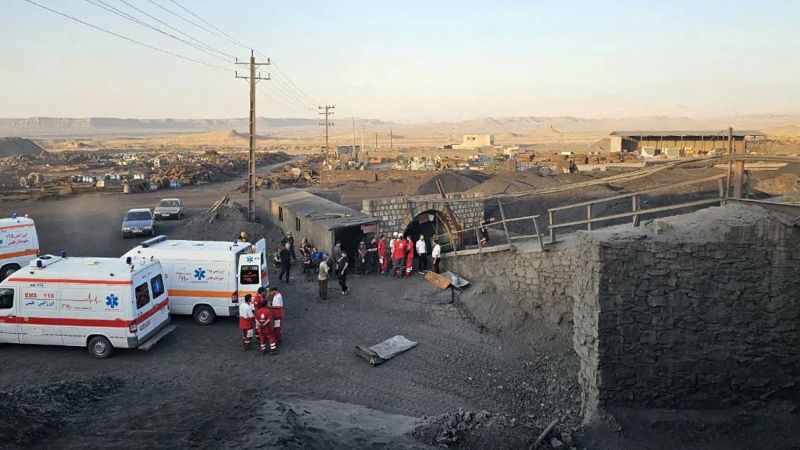In the northeastern Golestan province of Iran, on 3rd May 2017, a tragic incident occurred that will forever be etched in Iranian history. A tragic gas explosion took place in the Zemestanyurt coal mine, killing at least 51 people and leaving numerous lives forever disrupted.
At around 12:45 PM local time, a deadly methane gas explosion ripped through the mine, trapping numerous mine workers underground. The blast occurred around 1.2 km underground while close to 26 men were working tentatively. The calamity was such that it shook the earth surrounding the vicinity, leading to a massive caving in of the infrastructure above.
The cause of the gas explosion was reported to be the ignition of methane gas that is commonly found in coal mines and is extremely volatile. Unluckily, this deadly gas had found its way into a section of the mine where workers were busy in their routines. The ignition source is still unknown, but the damage was done in a matter of seconds.
On that day, there were approximately 500 workers present at the site, out of which more than 100 workers were inside the mine at the time of the explosion. The survivors reported hearing a loud boom followed by a rising cloud of black smoke and dust. As the mine collapsed, it resulted in a blockade of the tunnel, trapping nearly 31 miners underground and making the rescue operation considerably challenging.
The state-run Iranian Students’ News Agency reported that more than two-dozen emergency workers were dispatched to the scene immediately but hampered by the reduced visibility and structural instability of the mine. Eventually, the operation had to be painstakingly slow to prevent any further cave-ins and guarantee the safety of the remaining trapped miners.
Hours later, the rescue workers emerged from the entrance of the mine, carrying the bodies of their fellow workers. The exact number of casualties remained uncertain until later reports confirmed at least 50 deaths at the scene. This horrific tragedy was the worst mining disaster in Iran’s recent history and sent ripples of shock across the country and the global mining community.
Amidst the chaos and tragedy, there was deep admiration for the rescue workers’ brave and prompt response. Despite the perilous situation and significant risk to their own lives, they exhibited tremendous courage and dedication in their efforts to rescue their colleagues.
The intense grief and outrage in Iran led to a nationwide demand for accountability. Many were critical of the mining company and government regulations for not prioritizing the safety standards necessary to prevent such disasters. As a consequence, this incident was a stark reminder of the importance of safety precautions and mechanisms in such hazardous industries.
This tragic incident in the Zemestanyurt coal mine serves as a grim testament to the dangers inherent in the mining industry. It emphasizes the critical need for stringent safety regulations and practices. In stark contrast to the desolation it brought, the event also displayed the indomitable spirit of humanity, with rescue workers risking their lives to save their peers. It revealed the harsh realities of an industry that is often overlooked and raised several questions on safety, regulations, and accountability.




